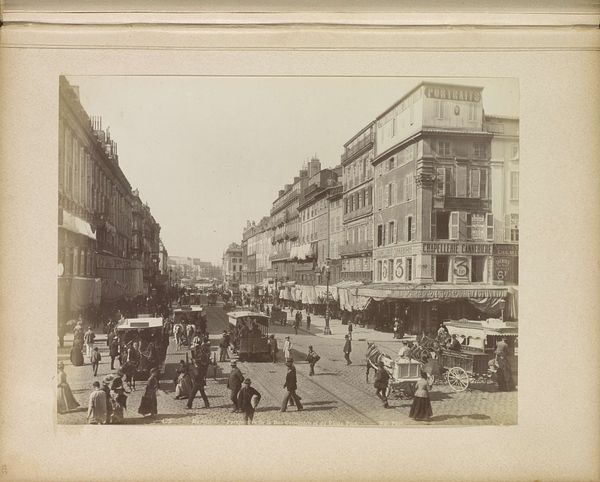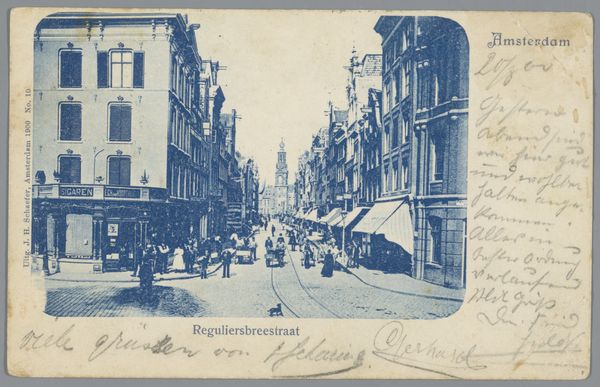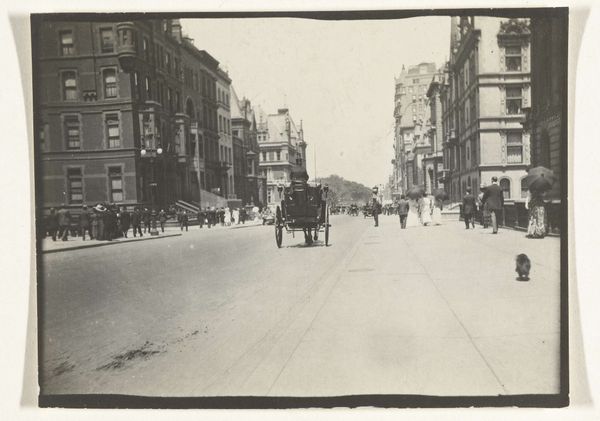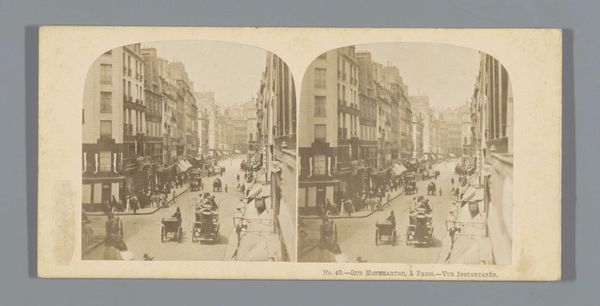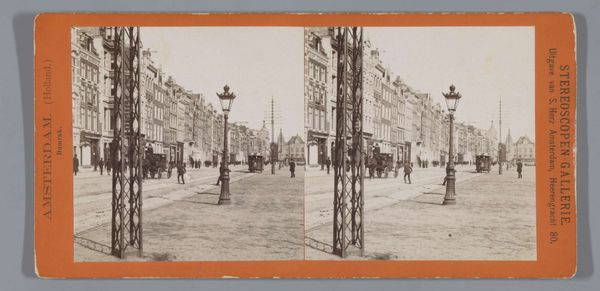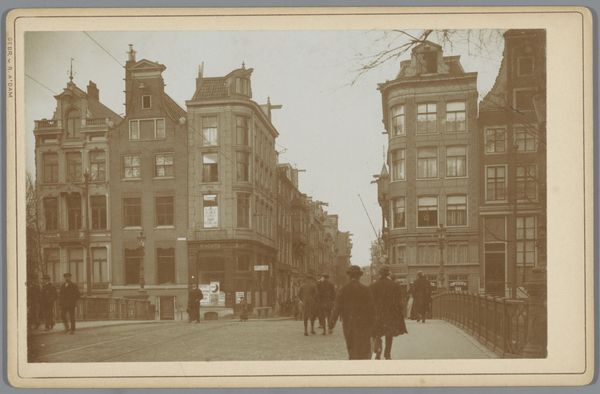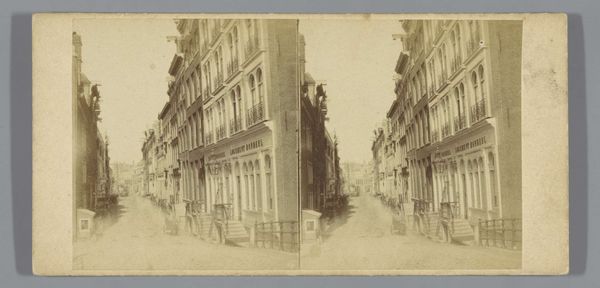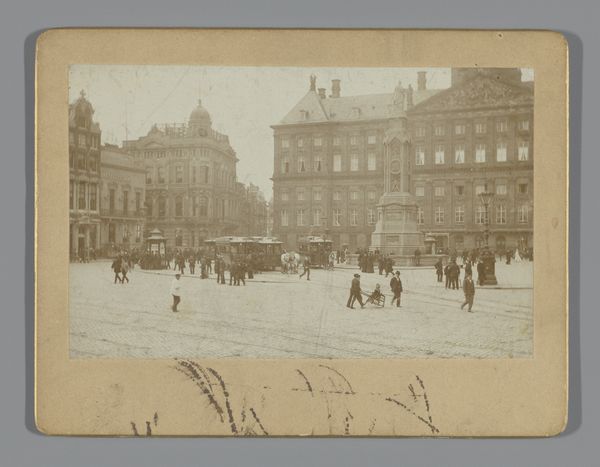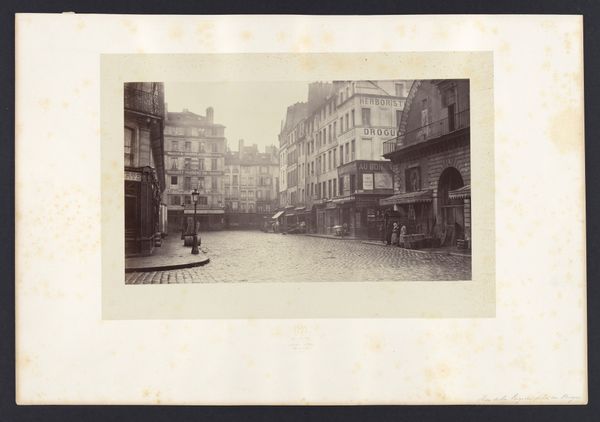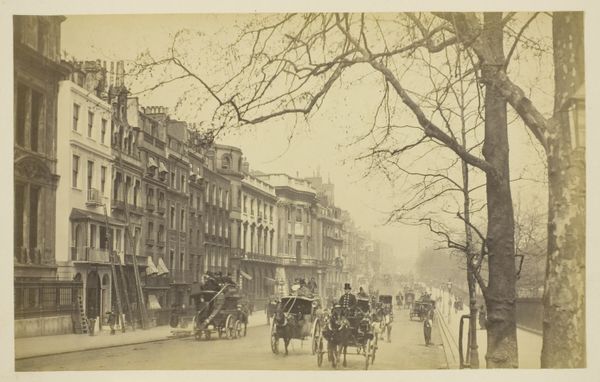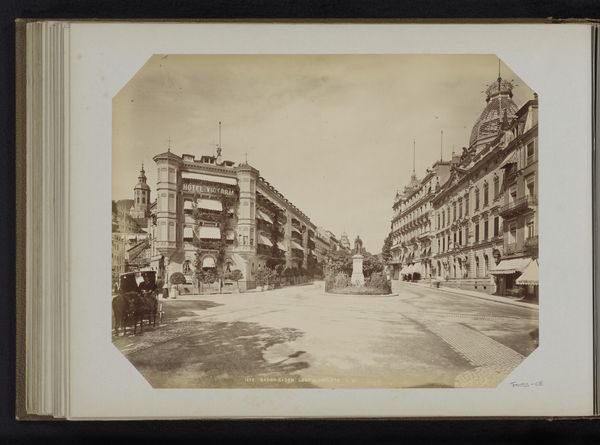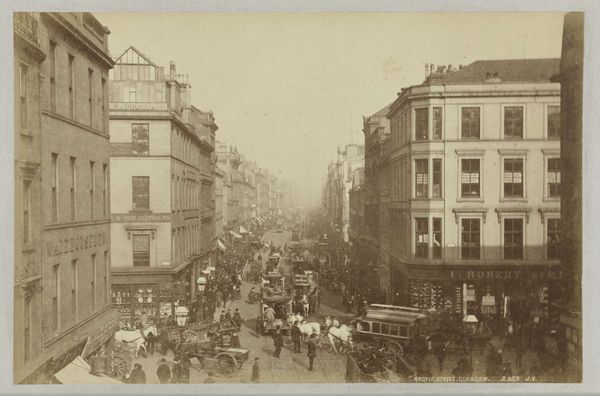
photography
#
pictorialism
#
street-photography
#
photography
#
cityscape
Dimensions: height 77 mm, width 81 mm
Copyright: Rijks Museum: Open Domain
Editor: Here we have Geldolph Adriaan Kessler's photograph, "De Friedrichstrasse, Berlin," taken between 1903 and 1910. It's a fascinating cityscape – almost ghostly in its monochromatic tones. What do you make of the subdued mood and the strong emphasis on architectural detail? Curator: It’s more than a cityscape; it’s a chronicle of a moment. Notice how the figures are blurred, almost spectral. Kessler, working in the pictorialist style, wasn’t simply documenting Berlin, he was capturing the *feeling* of Berlin. Look at the repetition of forms - the buildings mirroring each other, the wheels of the carriages, even the hats of the figures. What might that repetition symbolize to you? Editor: Perhaps the cyclical nature of city life, or maybe the feeling of being just another face in the crowd? There's definitely a sense of anonymity. Curator: Precisely! Think about the Friedrichstrasse itself – a grand, imposing street associated with progress and modernity. But within this progress, Kessler emphasizes the individual's place. Are they empowered, or swallowed by the relentless march of time and commerce? The photographic process itself becomes a metaphor: light etches the scene, capturing a fleeting, fragile reality. Does the fogginess of the scene remind you of anything? Editor: Like looking into the past… It’s almost dreamlike, softening the edges of reality. Curator: And consider the power of the photograph to act as a memento mori. The street is bustling, but the image whispers of ephemerality. Every element of this scene will inevitably fade. The photograph serves as a reminder of this passing. Editor: That's a powerful reading. I initially saw the photo as just a historical document, but now I recognize layers of meaning related to individual identity, the pace of modernity, and the nature of time itself. Curator: Indeed, it speaks to the burden of history. Even in the modern metropolis, the past continues to shape our present.
Comments
No comments
Be the first to comment and join the conversation on the ultimate creative platform.
